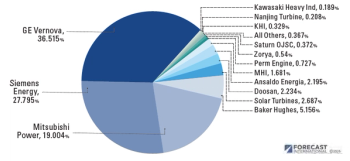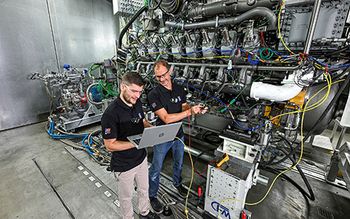
Co-Re-based alloys: a new material for gas turbines
It is estimated that future gas turbines will function at temperatures 200⁰C higher than those of today and that the materials currently in use cannot withstand such high temperatures. So there is a need to investigate new materials capable of resisting very severe temperature conditions and the heavy load on modern gas turbines.
Co-based alloys are routinely used in static components of gas turbines. Dr Mukherji, in the group of Prof. J. Rösler from the Institute for Materials of the Technical University of Braunschweig in Germany, is investigating the structure of Co-Re-based alloys and their behavior at high temperatures. These alloys are new for structural applications in gas turbines. By adding Rhenium (Re) to Cobalt (Co) alloys, it is possible to increase their melting temperature. The group aims to develop alloys where the base metal temperature with thermal barrier coatings reaches 1200⁰C.
Experiments to characterize structure
Neutron and synchrotron experiments are ideal tools for studying structural changes in materials in situ at high temperatures. Dr Mukherji and team have extensively used these tools for characterizing Co-Re-Cr alloys. NMI3 has supported experiments at the Budapest Neutron Centre to quantify the boron content and map boron distribution in Co-Re-Cr-alloys.
Complementary measurements were performed at the Forschungsneutronenquelle Heinz Maier-Leibnitz (FRMII) and at the Engineering Materials Science Beamline at the Helmholtz-Zentrum Geesthacht outstation at the Deutsches Elektronen-Synchrotron in Germany.
These researchers wanted to investigate the effect of boron doping in Co-Re alloys and the stabilities of the fine Tantalum Carbide (TaC) precipitates at high temperatures. The group observed that a fine dispersion of TaC precipitates strengthens some Co-Re alloys and these precipitates remain generally stable when exposed to high temperatures.
Experiments with neutron and synchrotron probes are providing fundamental information in understanding the Co-Re-Cr system. Using these tools, the researchers could observe micro structural involution at high temperatures. However, further research is still necessary before a technical alloy becomes available for structural applications in turbines.
Newsletter
Power your knowledge with the latest in turbine technology, engineering advances, and energy solutions—subscribe to Turbomachinery International today.





